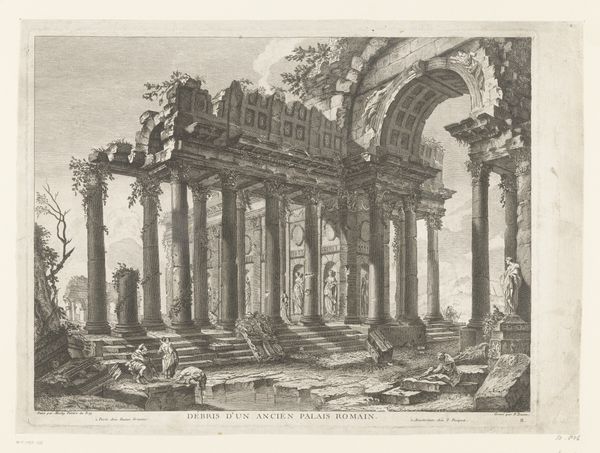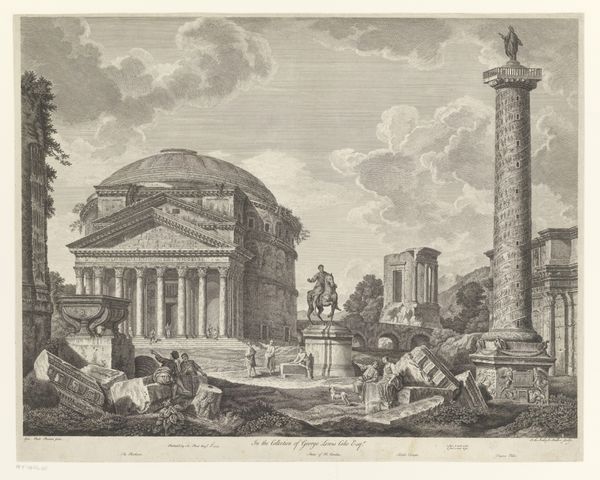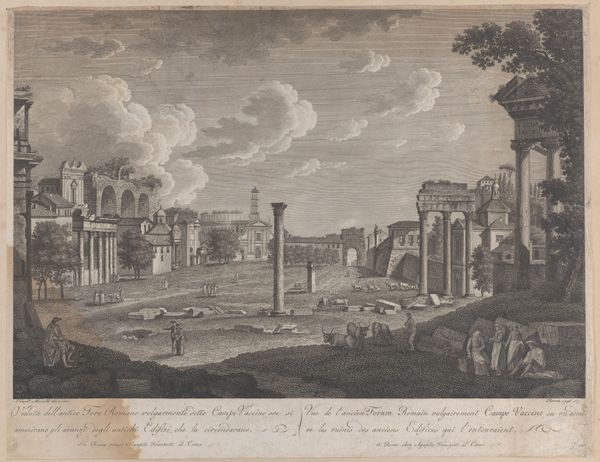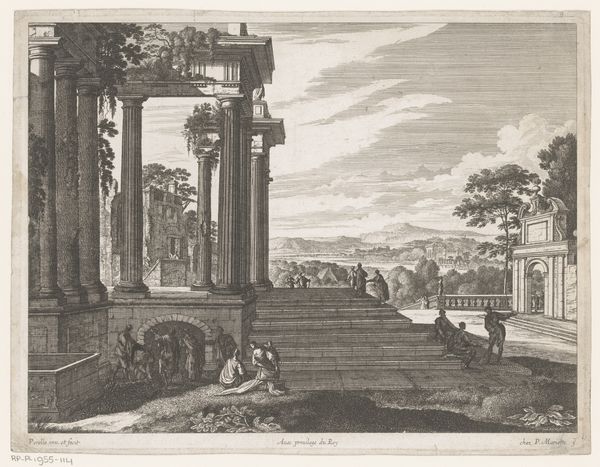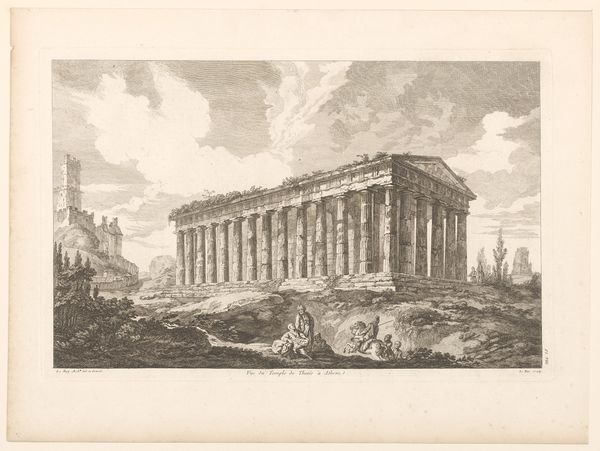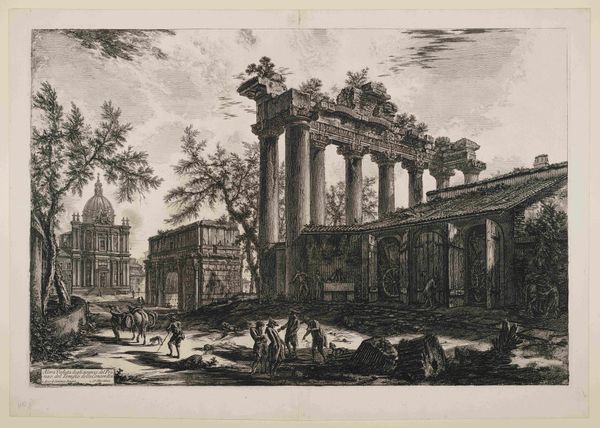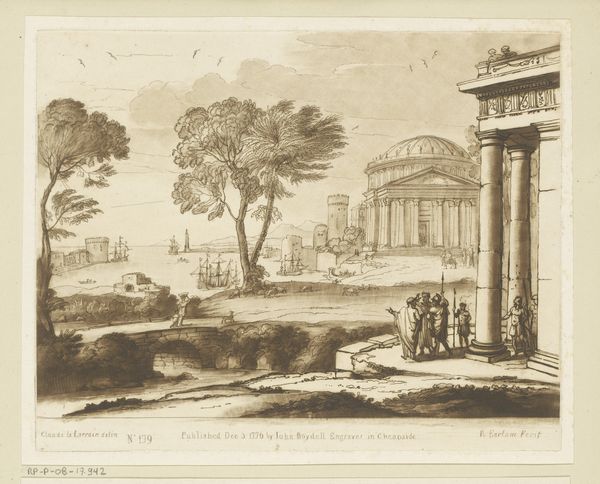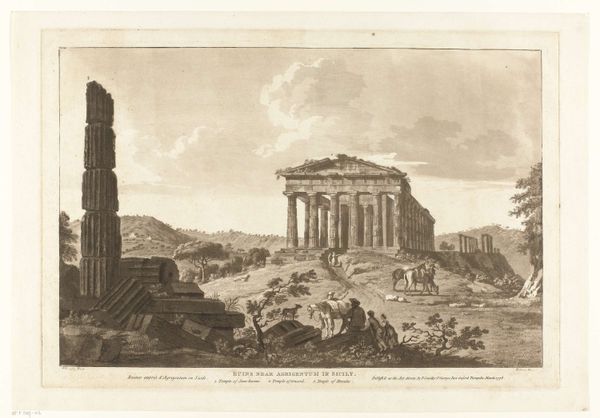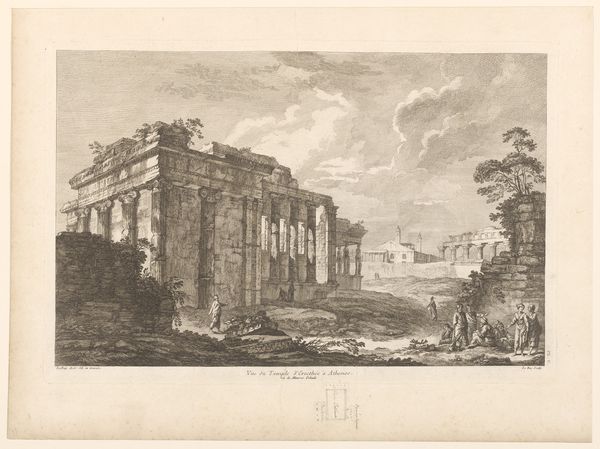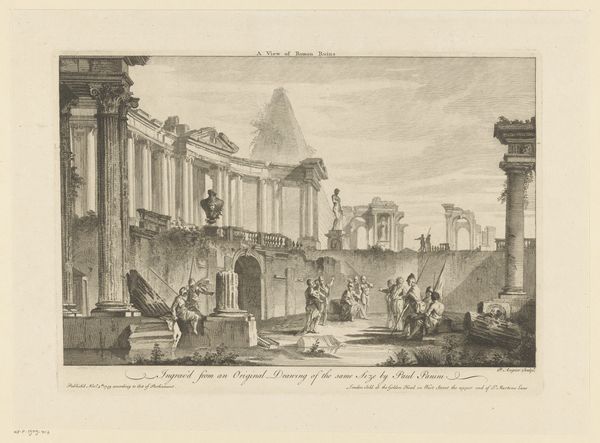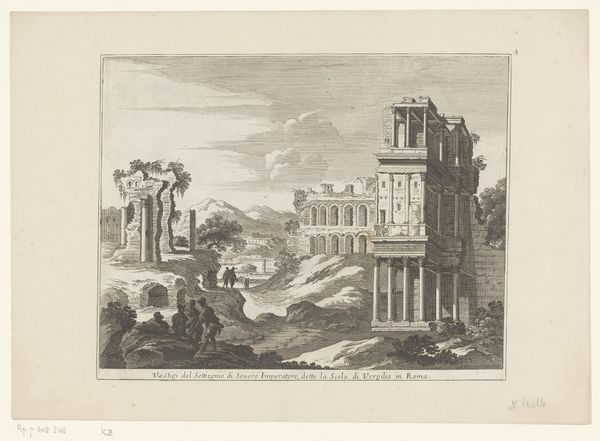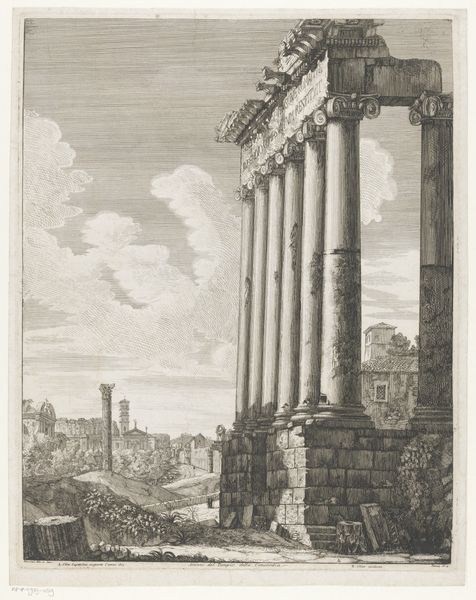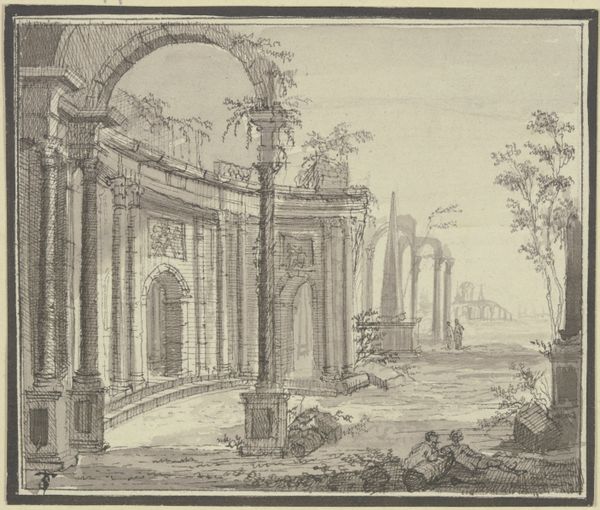
Ruïnelandschap met de Tempel van Antonius en Faustina, de Boog van Titus en de Tempel van Jupiter Optimus Maximus 1745
0:00
0:00
print, etching, architecture
#
baroque
# print
#
etching
#
landscape
#
figuration
#
romanesque
#
line
#
cityscape
#
history-painting
#
architecture
#
realism
Dimensions: height 485 mm, width 614 mm
Copyright: Rijks Museum: Open Domain
Curator: Johann Sebastian Müller etched this striking ruin landscape in 1745, depicting the Temple of Antoninus and Faustina, the Arch of Titus, and the Temple of Jupiter Optimus Maximus. The effect is quite dramatic, wouldn't you agree? Editor: Indeed! My initial reaction is one of profound melancholy. The skeletal remains of these once-mighty structures loom under an expansive sky. The monochromatic palette adds to the sense of loss and decay. Curator: It's interesting how Müller chose to arrange these ruins. He wasn’t simply documenting them; he’s making a statement about the transience of power, of empire. The figures seem dwarfed by the architectural remnants of a lost civilization, almost as if underlining our contemporary powerlessness. Editor: Semiotically speaking, the ruins operate as powerful symbols of mortality and the cyclical nature of history. Notice how the etching emphasizes line and form; Müller has created an almost geometric representation of decay. It directs our gaze from the detail of the classical elements toward a feeling of vastness. Curator: Exactly. The scene echoes back to socio-political narratives as well, pointing at what gets created or left to rot. You know, who were those empires celebrating through the Titus arch? Whose history has been erased to the benefit of said empire's grand vision? Editor: Yes! It urges one to really question which elements are central to that history, even though only rubble remains from those original structures. Perhaps Müller is critiquing a fascination with the past that ignores its inherent injustices. Curator: And in terms of social reflection, that etching style can offer a compelling framework to discuss whose historical narratives should rise or decay… Who decides and benefits from the decay? Editor: The sharp lines juxtaposed against the sprawling emptiness really reinforce the notion of irreversible decline. These aren't simply historical buildings but also a symbol for all our stories… The beauty within decay, perhaps? Curator: This landscape reveals a profound tension between enduring beauty and inescapable oblivion—an artistic tension as pertinent today as it was in 1745. Editor: Absolutely. And the detailed line work brings an eerie beauty to those thoughts. A landscape etched not only in copper but also in philosophical inquiry.
Comments
No comments
Be the first to comment and join the conversation on the ultimate creative platform.
